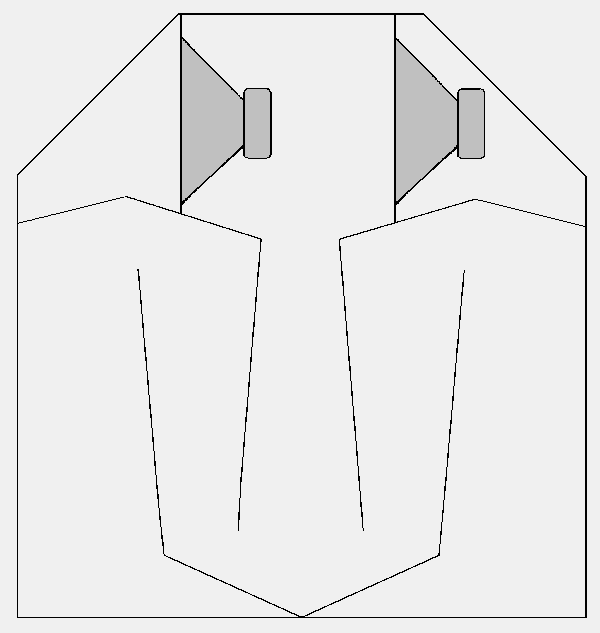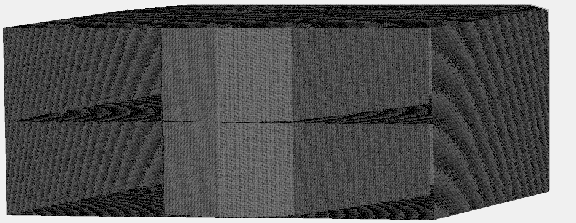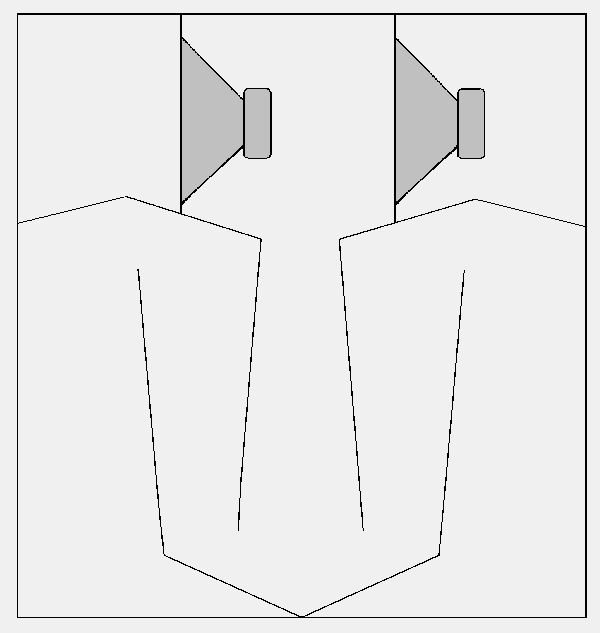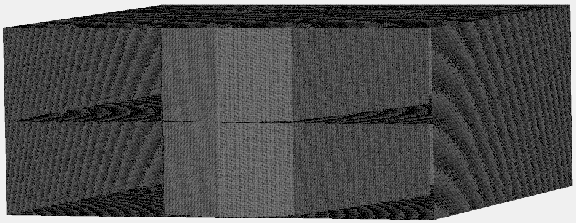As many of you may recall, I had sent a requisition to Eminence for an improved low-distortion "B12" subwoofer that could be used as a direct radiator in small 2ft3 vented loudspeakers or in a large folded basshorn. Eminence has decided that the device would be cost prohibitive to build at this time. They would be willing to consider continuing to work on the project if 1000 pieces were ordered and a substantial price paid to them to re-tool. Otherwise, they are not particularly interested in adding the larger flux ring required to reduce distortion at low frequencies. That leaves other options to consider, for anyone interested in an improved system.The thing that always concerned me was that portable basshorns are driven below their flare frequency, where they begin to act as direct radiators. They just aren't big enough to hit the low notes operating as a horn unless they are used in groups or near boundaries. And even in the best conditions, something this size really needs to have a lot of attention paid to motor performance in the lowest frequencies, in my opinion.
Rather than ignore or evade the fact that the horn is driven under the flare frequency, this design effort seeks to address it. At the lowest frequencies, the system acts sort of like a pseudo-bandpass speaker. Increased harmonics from low frequency signals enter the throat and are acted upon by it. If this were a low-budget system, that would be one thing. But when it is to be the best it can be, as should be the case for a loudspeaker system of this cost and complexity, then I expect the performance at the lowest frequencies to be optimized. For that reason, I sought to have a flux stabilized woofer made that would perfom well and offer reduced distortion in direct radiator mode.
But there is another way to do it, and I have changed my focus in this direction. With two drivers being used, they can be connected in a push-pull configuration so that they pressurize the front chamber with opposite sides of the cone. A positive pressure would be created by the front side of one cone and by the rear side of another. Any asymmetries caused by magnet non-linearity, flux modulation, or suspension non-linearity would then cancel in the front chamber. This offers great promise for reduced distortion basshorns.
I am working on two models right now, a version that uses a 12" driver and another that uses a larger 15" driver. The prototype will likely be built with a LAB12 woofer, and the LABhorn can then be used for comparison, to determine the reduction of harmonic distortion provided by this horn configuration. Several people make higher power 1000 watt 15" drivers, and this makes possible a second version with higher average output. They would be crossed over to large format conical midrange horns loaded with 15" drivers at 100Hz, again to 10" conical horns at 500Hz and finally to 1" exit compression horns at 1.6kHz.
 12 π folded horn
12 π folded horn
 12 π folded horn, front view
12 π folded horn, front view
The 12" version would likely be aproximately 18-20" in width, whereas the one with 15" drivers would need to be 26-30" wide. In this way, the 15" version would actually have a slightly higher flare rate but potentially much higher output capacity. Both horns would be the roughly the same in the other two dimensions, approximately 40" to 48", with the 12" verson slightly smaller because of its smaller back chamber volume. The smaller horn would also probably have nipped corners.
 15 π folded horn
15 π folded horn
 15 π folded horn, front view
15 π folded horn, front view
Both the 12" and 15" push-pull plenum horns provide cancellation of second-order harmonics in the front chamber, so I expect they should offer much lower distortion levels than other designs. The front chamber will be larger than other designs, which will act as a low-pass filter. Improved performance in the form of reduced distortion is what motivated me to undertake this effort. But the possibility of using different drivers having increased power handling and output is a welcome improvement too.
I was disappointed when the long wait for the B12 woofers ended without an improved, low-distortion woofer but am now excited to see progress in other areas. I had made push-pull cornerhorn designs, so I'm not sure why I didn't consider it as an option for a folded horn before now. It looks like an obvious and attractive way to build a dual-driver basshorn, with the front chamber serving as a harmonics-cancellation plenum. I am quite anxious to build a working prototype for testing.







